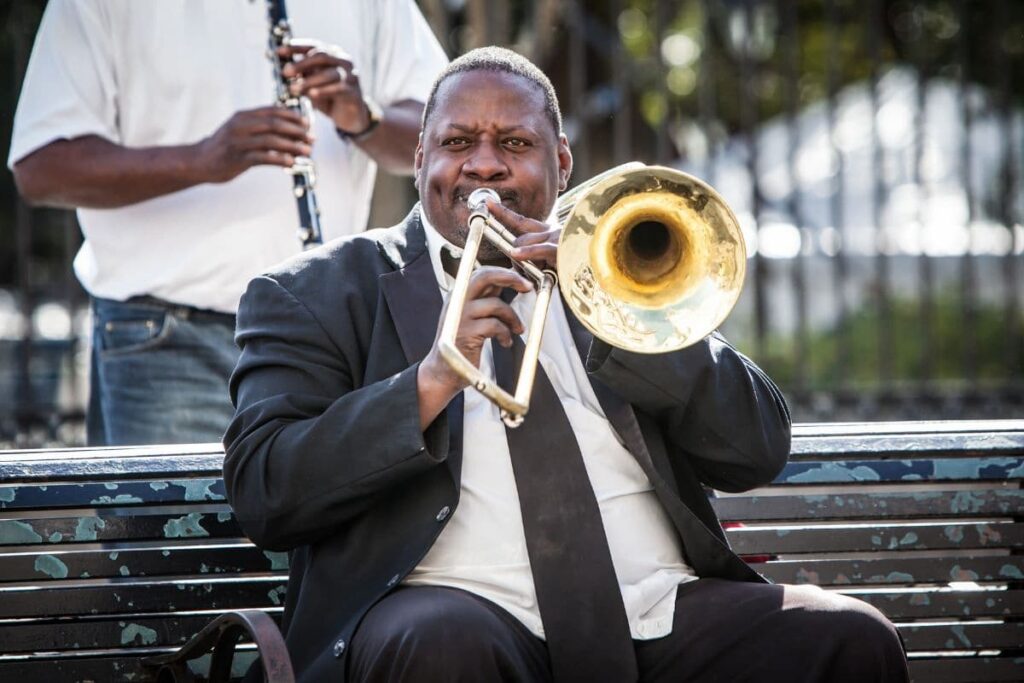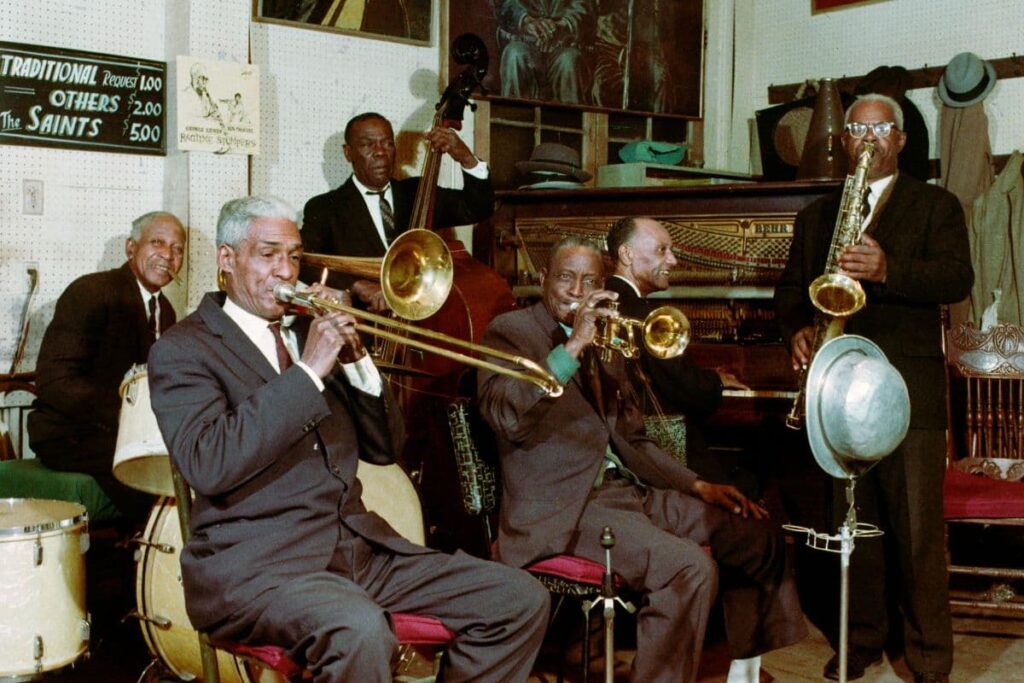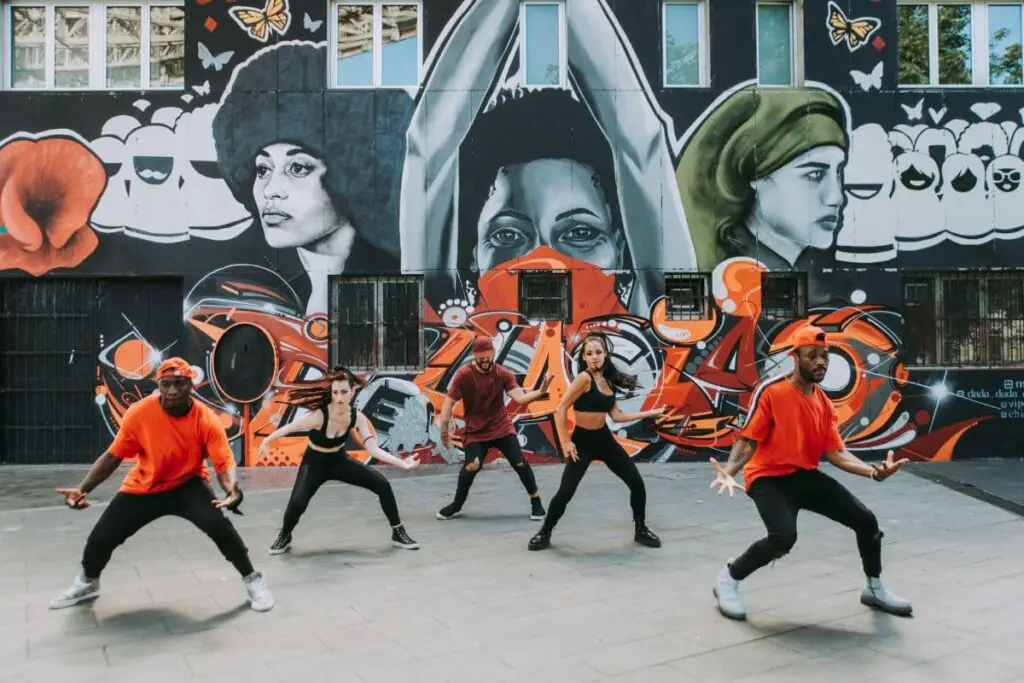|
Getting your Trinity Audio player ready...
|
With a rich musical heritage shaped by various cultures, New Orleans, Louisiana, is one of the most influential music centres in the world. The distinctive sounds of the Crescent City exude soul and express the story of generations. New Orleans-style music encompasses multiple genres and is the heartbeat of the music scene in the United States.
New Orleans-style music includes Dixieland jazz, a unique blues rock and roll sound, gospel, funk, and hip-hop. The city’s musical heritage draws its influence from West African rhythms, African American folk music, and French and Spanish elements. Music is an integral part of New Orleans culture.
Aligning New Orleans with a single musical style is challenging, if not impossible. The sounds developed and played throughout the city come from multiple places, and are derived from various styles. This gives New Orleans one of the unique musical cultures in the United States.

A Blend of Musical Styles
Only a year after being colonised by France, New Orleans became home to thousands of West African slaves, forcibly shipped across the Atlantic Ocean. The slaves, men, and women, built Crescent City from the ground up.
When they weren’t ploughing the fields or building the city’s infrastructure, they congregated. They sang, danced, and hosted colourful religious ceremonies to hold on to their West African traditions. Through music, they passed on their heritage to New Orleans residents and newcomers and, later, to their own children.
By the early 1800s, the population of New Orleans soared, bringing in more African, French, and Caribbean people. With it came even more diverse sounds to influence New Orleans-style music.
Congo Square
During the second decade of the 1800s, things changed for the slaves of New Orleans. Early on, they had greater freedom to assemble in groups. However, by 1817, the government’s restrictions on when and where enslaved and free people of colour could gather became harsher.
As a result, men, women, and children gathered at the back of town in an area that became known as Congo Square. Here, African Americans, mixed-race Creoles, Caribbean, Latin, and various other ethnic groups merged and shared the traditions of their countries. They drummed, chanted, sang, danced, and created a rich legacy of rhythm and celebration.
Gatherings in New Orleans ceased as the authorities limited the movement of coloured people more strictly. However, the musical traditions of the Crescent City lived on.
African American Folk Music
As racial tension in the American southern states increased; the suffering continued. Music was how many African American men and women dealt with slavery and coped with the struggles they faced. Songs, street cries, and spirituals developed in New Orleans and other parts of the South during this time.
Some songs even included coded messages for other slaves, with directions to safe havens and instructions to help them avoid capture.
They passed down the emotion and raw delivery behind the tunes from generation to generation. Their folk songs influenced the future of music.
Crescent City Jazz Music
New Orleans-style music is difficult to describe using one genre, but the style Crescent City is best known for is Jazz.

Ragtime: New Orleans’s Early Jazz
Between the end of the nineteenth century and the beginning of the twentieth, ragtime became a defining music style in New Orleans. African American musicians used it to express themselves without being questioned by white officials.
Charles (Buddy) Bolden was one of the first to give New Orleans a taste of Dixieland jazz (named after his band). He used exciting melodies and brass instruments to mimic popular vocal styles. As a result, he created a new ragtime style that later became known as jazz.
The new sound replaced orchestral sounds, tore down racial barriers, and moved up the Mississippi, on its way across the nation.
Listen to The Dixieland Jazz Band on YouTube:
Post-Civil War Jazz
After the Civil War, the American South changed yet again. Though many African Americans were freed from slavery, white Americans did not free them from mistreatment. They began congregating in private quarters, such as music halls and clubs. These areas became well-known jazz venues, notably Preservation Hall.
During the post-Civil War era, musicians such as Louis Armstrong and Kid Ory entered the scene. They became well known across the country, spreading New Orleans-style music across the nation.
Listen to Louis Armstrong and his Hot Five, “Fireworks” on YouTube:
New Orleans – Rhythm & Blues – Rock and Roll
Although ragtime dominated the music scene until the 1930s, they later absorbed it into a new style of music. Blues rock and roll took the city by storm during the late 1940s.
Of course, the Crescent City can’t claim full responsibility for the development of blues rock and roll as a subgenre. However, it can take credit for the unique combination of jazz, blues, gospel, Caribbean, and a Latin American flavour that created a rock and roll sound unlike anything before.
Perhaps one of the most prolific players in the New Orleans blues rock and roll moment is Professor Longhair. His music utilised the underlying substance of all New Orleans-style music, particularly rock and roll, creating a popular and influential sound.
Listen to Professor Longhair’s “Go To The Mardi Gras”:
After World War II, Dave Bartholomew introduced himself to the world after reeling in the blues rock and roll style and harnessing it. He played for Fats Domino and wrote for many other musicians of the 1950s, creating a sound many people loved.
Listen to Fats Domino “Ain’t That a Shame”:
To keep in line with the changing times and music preferences, Allen Toussaint enhanced the city’s musical reputation. He combined light background riffs, catchy hooks, and funky, uptempo rhythm and blues styles to create an updated rock sound. Chris Kenner’s I Like It Like That is an excellent example of one of Toussaint’s productions.
Listen to Chris Kenner “I Like It Like That”:
By the 1960s, people grew tired of the sound and moved on to different music styles. New Orleans-style music seemed to fade out for a while. However, it still played a vital role in the development of new rock sounds.
During the 1970s, New Orleans experienced a revitalisation of its jazz scene and brass bands. As with all changes in music, the rebirth came with new, experimental sounds.
Hip-Hop in The Big Easy
During the mid-1990s, New Orleans surprised the music industry yet again with the creation of two hip-hop labels: New No Limit Records (formerly known as No Limit Records) and Cash Money Records.

These labels produced dozens of albums and launched multiple successful artists who hailed from the Crescent City. New No Limit Records included Mystikal and Master P. Cash Money Records signed Juvenile and Lil’ Wayne.
Final Thoughts
New Orleans’s location on the Mississippi River and the Gulf of Mexico allowed it to become a mecca for the blending of cultures. This led to the merging of musical styles, creating a rich, diverse musical heritage. The melting pot of New Orleans became the birthplace of American music and continues to inspire the world today.

